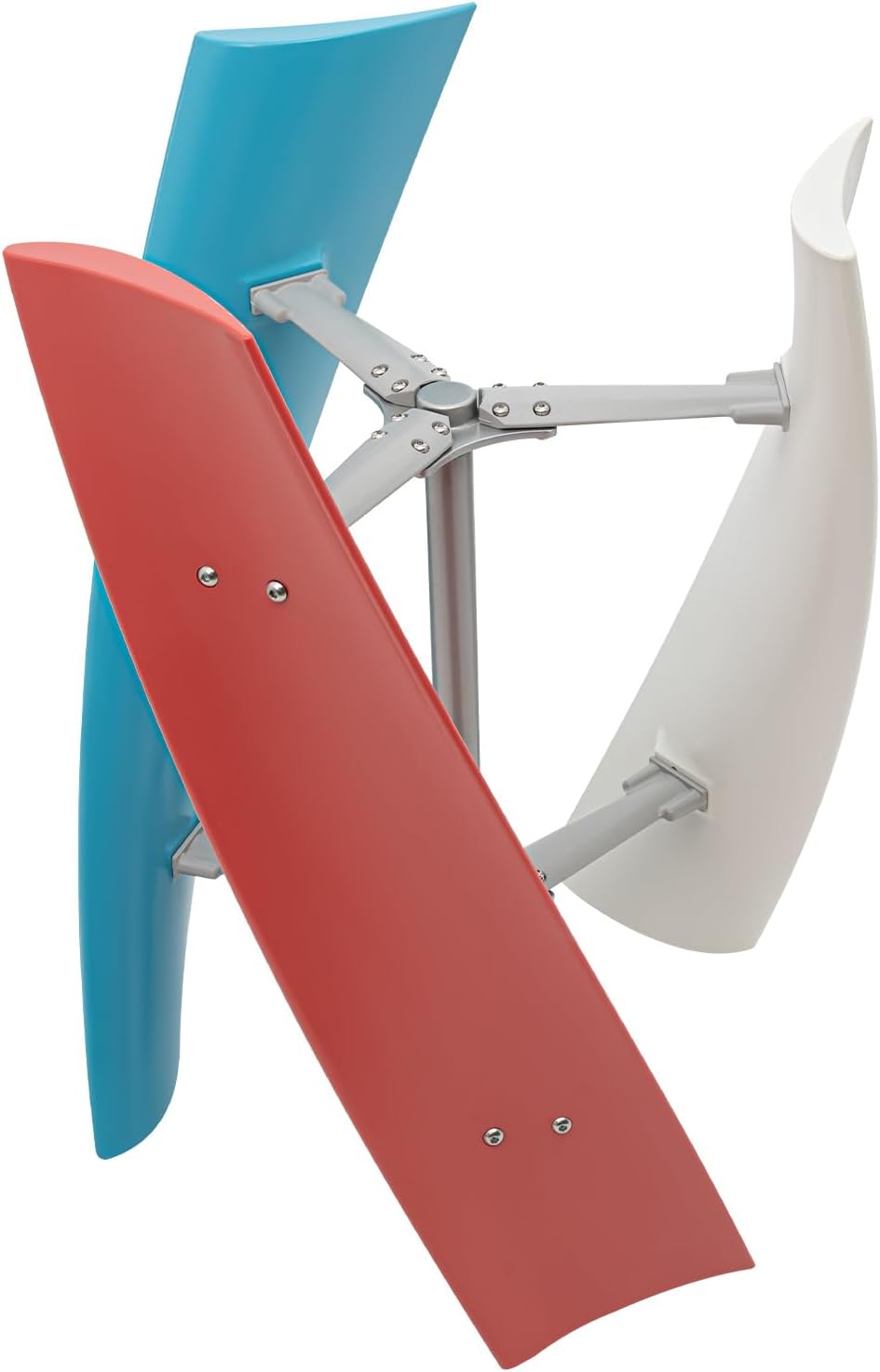
Price: $123.00 as of 09/21/2025 – Details
This product has a out of 5 rating
Quick take
A compact vertical-axis turbine that’s easy to site and tolerant of shifting wind directions. It’s appealing for small yards or RV/remote setups where space is tight. Like most budget VAWTs, real-world output will be well below the headline wattage unless you’ve got consistently strong winds and a proper mast. Think “trickle charger with good days,” not “whole-home power.”
What stands out
- All-in-one kit feel: Turbine, controller, and mounting hardware in one box lowers the barrier to entry.
- Vertical-axis design: Catches wind from any direction—handy in gusty, turbulent areas where a horizontal-axis turbine would keep yawing.
- Small footprint: Easier to place than big three-blade horizontals; less visually intrusive and generally safer around people.
- Low-start claims: VAWTs often begin spinning at lower speeds than HAWTs, so you’ll see motion more often (though “spinning” ≠ “meaningful watts”).
Where it could be better
- Efficiency vs. HAWTs: Vertical designs are typically less efficient. To hit rated power, you’ll need higher sustained wind than the marketing suggests.
- Controller quality & wiring: Budget kits can ship with simple PWM controllers, thin leads, or sparse documentation. Check connector sizes, wire gauge, and dump-load behavior before permanent install.
- Noise & vibration: Quieter than many horizontals at speed, but resonance through a short or flimsy pole can hum. Use a stout mast, rubber isolators, and proper guying.
- Power curve realism: Expect a steep curve—little output below ~10–12 mph; usable trickle above that; meaningful bursts when winds climb. Don’t size expectations off the peak number.
Setup tips (to get the best from it)
- Height matters: Turbulence kills output. Put it above nearby rooflines/trees (rule of thumb: at least 10 ft above obstructions within 100 ft).
- Rigid mast + guys: Use schedule-rated pipe or a legit antenna mast; add guy wires at two levels if the pole exceeds ~10–12 ft.
- Electrical plan: Run short, appropriately gauged DC lines to the controller, then to a battery bank. Add surge protection and a proper dump load if your controller supports it.
- Hybrid mindset: Pair with a solar panel for steadier daily energy—sun often complements lulls in wind.
Good fits
- Cabins, sheds, boats, or RVs where wind is regular and you want to keep a 12/24V battery topped up.
- Coastal, hilltop, or prairie locations that see frequent 12–20+ mph winds.
- Tinkerers who enjoy dialing in masts, guys, and charge setups.
Not ideal if…
- Your site is sheltered/suburban with tall trees and buildings (turbulence = poor output).
- You’re expecting reliable kilowatt-hours on calm days.
- You can’t mount a proper mast or follow local permitting rules.
Verdict
A neat, compact way to “add some wind” to a small off-grid system—provided you give it height, a solid mast, and realistic expectations. Treat it as a supplemental charger, not a primary source, and it can earn its keep. If you want me to match it with a battery/solar combo and sketch wiring and mast parts, say the word and I’ll lay it out.


